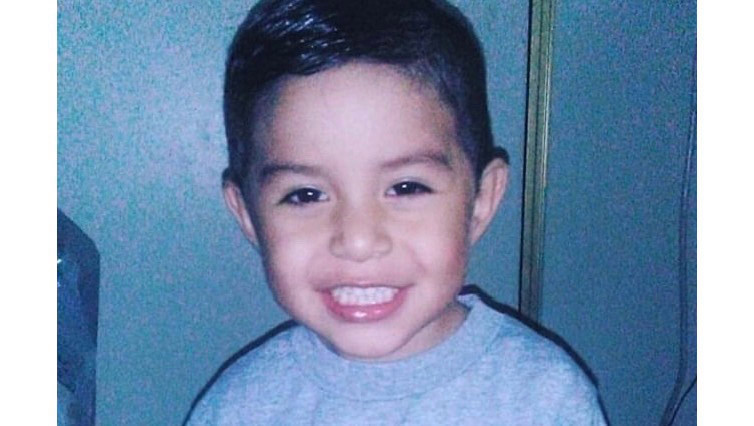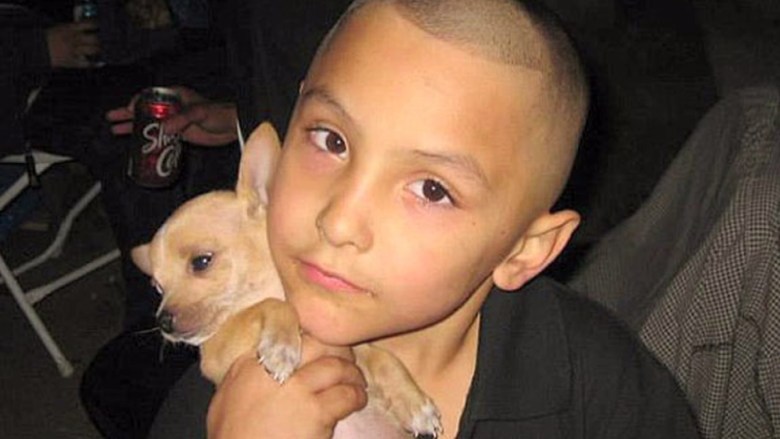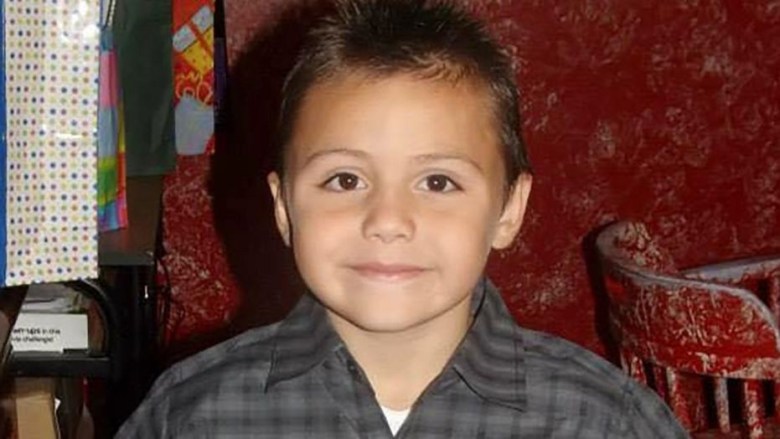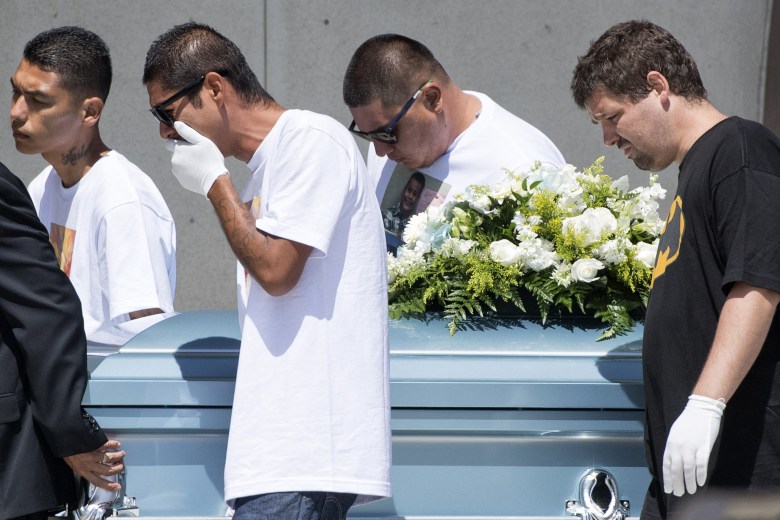LA police failed to investigate 4,000 serious child abuse reports in 2018 and 2019. Why?
October 21, 2019 · By CONTRIBUTING WRITER for www.dailynews.com

Noah Cuatro, 4, who was known to social workers died earlier this year under suspicious circumstances. His parents, Ursula Juarez and Jose Cuatro have been charged with murder and torture charges. (Image from GoFundMe)
The first recorded sign of trouble in the brief life of Noah Cuatro came before he was even born. In August 2014, when his mother was nine months pregnant with Noah, she allegedly threw her baby sister in her crib, fracturing the 10-month-old’s skull in two places.
Shortly after Noah was born, workers with Los Angeles County’s Department of Children and Family Services removed him and another young sibling from their turmoil-filled home. It would be the first of two stints in foster care.
He was returned home in 2014, but reentered care in August 2017 after county workers found his parents — Ursula Juarez and Jose Cuatro — had medically neglected the toddler. Eventually, in November 2018, the juvenile court ordered Noah returned home, over the objections of DCFS.
Social workers last saw Noah this year in late June. Two weeks later, on July 6, the 4-year-old Palmdale boy was dead. Los Angeles County sheriff’s deputies arrested Noah’s parents on Sept. 26, and the District Attorney’s Office charged them with murder and torture four days later.
Law enforcement response
While DCFS social workers figured prominently in the life of Noah and others like him in high-profile abuse cases, his death also raises questions about what role law enforcement plays in protecting vulnerable children.
New data provided by the Los Angeles County District Attorney’s Office shows just how disparate that response is across the county’s 46 law enforcement agencies. For Noah, who spent most of his short life in the jurisdiction of the Los Angeles Police Department, the number of cases of child abuse that are not investigated stands out.
Data from the district attorney shows that, from January 2018 to July 2019, the LAPD did not investigate nearly 4,000 allegations of serious child abuse fielded by its stations or generated through a countywide electronic cross-reporting system dubbed E-SCARS. In 2018, L.A. police did not investigate 10% of the 24,000-plus reports it received from the two sources, while the percentage climbed to 13% in the first half of 2019.
By comparison, Los Angeles County sheriff’s deputies responded to child abuse reports 97% of the time during the same 18-month period, though it fielded only 71% as many calls.
Most of those reports are sent to law enforcement by DCFS, and are limited to “allegations of sexual abuse, physical abuse, severe neglect, emotional abuse, and exploitation,” according to agency policy guidelines.
“When we are talking about physical and sexual abuse, we are talking about potential crimes,” said Michal Nash, executive director of the county’s Office of Child Protection. “Do you only want some of them investigated or do you want them all investigated? The answer is pretty self-apparent. You are talking about crimes on children, after all.”
Asked why the LAPD failed to investigate thousands of child abuse reports, Media Relations Director Josh Rubenstein said in an email statement:
“Our officers and detectives work tirelessly to investigate claims of abuse; however, we cannot make a broad brush comment without looking at each individual case in context to understand the details of the investigations.”
Interaction with Noah’s family
On April 17 and May 15, while the Cuatro family was living in the North Hills area of Los Angeles, DCFS’ Child Protection Hotline fielded two separate allegations of sexual abuse against Noah, and domestic violence within the home. Those allegations were transmitted through E-SCARS to the LAPD, according to Nash.
Nash, who is coordinating a countywide effort to improve law enforcement’s response to suspected child abuse, came across these reports while investigating Noah’s death for a report that delivered to the Board of Supervisors earlier this month. Although he requested details from the police, Nash said “no information has been received on what, if any, action was taken by LAPD in response to those reports.”
LAPD officials would not answer questions on Noah’s case, instead directing a reporter to file a public records request. Although that request has been filed, it can take weeks or months to receive a reply.
Sometime after the last report of sexual abuse against Noah in May, his family moved to Palmdale. On July 5, Noah’s parents called 911, claiming the boy had drowned in the pool of their apartment complex.
But Los Angeles County sheriff’s deputies found “what looked like a trauma on the body inconsistent with what the explanation was for the cause of death,” spurring a homicide investigation.
LAPD, sheriff’s policies the same
The Los Angeles County District Attorney’s Office acknowledges it can be difficult to compare responses between different law enforcement agencies.
“The discrepancy between law enforcement ‘no investigation’ percentages may be attributed to a number of factors, including differing internal agency response,” said district attorney’s spokeswoman Shiara Davila-Morales in an email.
Officials from both LAPD and the Sheriff’s Department said their policies are to send officers out to investigate all suspected reports of child abuse. In the event of duplicate reports, or when officers are unable to make contact with a family, some child abuse reports can be marked “no investigation.”
The two agencies also have different structures to deploy officers. While the LAPD has a centralized 50-member child abuse section, the Sheriff’s Department has about 60 investigator positions broken into six teams across the county.
Importantly, the discrepancies from agency to agency also are apparent from station to station within the LAPD.
Officers at the department’s 77th Division in South L.A rolled on less than 80% of the calls alleging child abuse in 2018 and 2019. At the same time, the Rampart Division, which ranges across Silver Lake, Echo Park, Koreatown, Pico-Union and Westlake, responded to 98% of its child abuse alerts. Ostensibly, the volume of calls is a contributing factor in the disparity.
In L.A. County’s Service Provision Area 4, which includes Rampart Division, four children already on the radar of child protection workers were killed by family or caregivers from 2015 to 2018. In Service Provision Area 6, which includes South L.A., 20 children known to DCFS were similarly killed during the same time period.
Elected officials respond
Reid Lidow, a deputy press secretary for Mayor Eric Garcetti, said in an email: “The LAPD has a swift, thorough process for investigating allegations of child abuse, and is strongly committed to bringing abusers to justice.”
County Supervisor Kathryn Barger voiced her desire to see law enforcement across the county respond more uniformly to reports of child abuse.
“We are communicating and actually addressing some of the disparities that are taking place,” Barger said. “If it means modifying or restructuring on both sides, there is very much open dialogue to look at that, for the greater good.”
E-SCARS credited with change
In 2013, the LAPD investigated 74% of the suspected child abuse cases it received, while it now responds to nearly 90%. The Long Beach Police Department — which failed to investigate nearly half of the abuse reports it received that year — is now the most responsive in the county. In 2018 and the first half of 2019, Long Beach police investigated every call of abuse it received.
Long Beach police Sgt. Daniel Mendoza credits E-SCARS, which stands for Electronic Suspected Child Abuse Reporting System, for driving the change.
“Now there is a system of checks and balances and we are able to manage and be accountable for every call,” Mendoza said.
Before E-SCARS was launched in 2009, law enforcement and county social workers often lost reports or did not see them for days or weeks, according to officials familiar with the system. E-SCARS was supposed to make cross-reporting instantaneous, so law enforcement and DCFS are alerted immediately.
While E-SCARS was an improvement, it had a tiny budget and small staff, limiting its effectiveness.

Gabriel Fernandez is seen in this photo provided by his family.
That changed when law enforcement’s role in child abuse became front-page news with the horrific 2013 murder of 8-year-old Gabriel Fernandez, also in Palmdale. L.A. County’s Blue Ribbon Commission on Child Protection, impaneled to dig into how the maltreatment of Gabriel and other children was repeatedly missed, zeroed in on the “failure by some law enforcement entities to cross-report Suspected Child Abuse Reports.”
Since then, the L.A. County Board of Supervisors has boosted spending on E-SCARS and its aged technology. “We have gone from AOL dial-up to the iPhone 10 in the course of five years,” said Brad McCartt, who now leads the unit, earlier this year.
Detective Maria Singh, a supervisor with LAPD’s child abuse section, said her unit is vigilant when reports of child abuse show up on E-SCARS.
“When these (suspected child abuse report) are being received in our office, they are being dispatched on,” Singh said. “We have done a lot of justice for these children who have undergone horrific physical or sexual abuse. It just keeps me going.”
Singh said about 50 detectives and investigators in LAPD are solely focused on child abuse, and she is on call 24/7.

Anthony Avalos, 10, died of serious head injuries on June 21, 2018, and reportedly had cigarette burns covering his body. (Image from Facebook)
Next steps
In February, the Sheriff’s Department and DCFS launched a pilot project aimed at stopping serious child abuse in Lancaster and Palmdale, wracked by the deaths of Gabriel in 2013, 10-year-old Anthony Avalos in 2018 and Noah this year. There, deputies and child abuse investigators are rolling out together on calls of severe child abuse or neglect.
Through July, these small teams have conducted 261 joint responses. In August, DCFS, the Sheriff’s Department and LAPD all sat down to discuss expanding the program out beyond Lancaster and Palmdale, according to a recent report by the Office of Child Protection.

Victor Avalos the father of Anthony Avalos carries his son’s casket out of the St. Junipero Serra Parish Church. The 10-year-old Lancaster boy was allegedly tortured to death by his mother and her boyfriend. He was found unresponsive in his mother’s home on June 20 and died the next day. (Photo by Hans Gutknecht, Los Angeles Daily News/SCNG)
But a persistent problem identified by the Blue Ribbon Commission in 2014 — and in a report by the OCP issued after the death of Anthony in 2018 — is a lack of consistency in how law enforcement agencies and DCFS interact in child abuse investigations.
Nash’s goal is to create a protocol that clearly delineates the roles of each.
“OK, they both mutually reported to E-SCARS. The question is then what?” Nash said. “It is the ‘then what’ that I am concerned about.”
This story was published in partnership with The Chronicle of Social Change, a national news site focused on children, youth and families.






